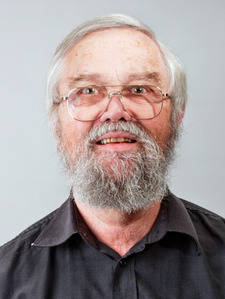
| Greg's photography pages |
| Greg's photo albums |
| Greg's photos |
| Greg's photo index |

|
|
|
I've been taking photos on a regular basis since 1964, originally on film, and since 1998 with a digital camera. On this web site, I have two directory hierarchies: this one is about photography and my involvement with it. My photos are in a separate directory hierarchy.
In this directory I have, roughly in reverse chronological order,
On this page I discuss the following matters:
| Scanning negatives |
| Using my photos |
| Higher resolution photos |
| Why are the thumbnails so big? |
I'm currently in the process of scanning in my old negatives and slides; I bought a Canon “CanoScan” 9900F scanner for this purpose in 2004, but it did not live up to the advertised capabilities. In 2007 I bought an Epson “Perfection 4990 PHOTO”, which is better, but not completely satisfactory. I'm still looking.
If you like my photos, you're welcome to use them for non-commercial fair use. I'd appreciate it if you contact me before doing so. See the copyright conditions for more details, including commercial use. I find things like the abuse of my personal photo by the Birmingham: It's not shit project to be neither non-commercial nor fair use, and it's unclear why Crikey published a photo of mine (with attribution, admittedly) without asking, though they had spoken to me on the phone only shortly before.
The photos on the web have been optimized for display on the web: even the high resolution versions typically have relatively high compression, and they're made brighter and have more contrast than the originals. If you need a photo for other purposes, I have more natural and less heavily compressed versions available.
The photos are stored on the web server in a hierarchy of three different resolutions. If you look at the thumbnails, you can click on any photo to display it at the next larger size; click on that one and you'll get the photo at original size, scaled to fit the screen width. If you click on it again, you get the same image at its original size, usually much larger still. Beware the largest photos: they can be 2 to 3 MB in size, so they can take a long time to load. Some of the panoramas are over 10 MB.
The “thumbnail” and “small” sizes are a fixed number of pixels, regardless of the original, so sometimes, when photos have been aggressively cropped, you'll find the “small” photos to be larger than the original. The original still has the best detail.
On occasion I've heard from people who want to access a high-quality version of the photo, but don't know how to do it. Here's the text of a “how to” that I sent on one such occasion. The URLs relate to that particular occasion, but they're as good an example as any.
In the example I'm assuming that you're using Microsoft's “Internet Explorer”; you can check this at the top of the window, after the name of the URL. If you're using a different browser, it shouldn't make any difference, though things may look a little different.
Starting at the photo index, select a thumbnail link, say for 24 September 2006.
In that page, click on the photo you want.
You'll get a new page with that photo significantly larger. You get options to change the sizes of all photos on the page, or to make this one small again. To make this photo still larger, click on it again.
You'll get a new page with just this photo, filling the screen width. Click on it again.
This time you get the original image. In most cases, it'll be larger still, but sometimes it's smaller. Either way, this is the one you want, since it's the original.
Select “File”, then “Save as” and specify a place to save the file. Even though it looks small on the screen, it will be a full-size image.
- Probleme mit dem Sucher der Olympus E-M1 (German)
If this still isn't enough, or if the photos appear too brightly coloured (they're optimized for web display), please contact me and I can probably find better versions for you that aren't on the web.
When I started with digital photography, “high” resolution meant a resolution of 1280x960 pixels, somewhere between 1.1 and 1.3 MP, depending on how you count. I scaled the photos down linearly to 25% and 10% of the original, 320x240 and 128x96 pixels respectively, and called the smaller photos “small” and “thumbnail”. Since 1998, resolutions have increased: my current (2014) camera has a resolution of 16 MP. The smaller sizes have increased too, until the “thumbnails” were 300x225, nearly the size of the old “small” photos, and not what one would call thumbnails any more. But I can't think of a better term.
There's another problem with this scaling: what if the photos aren't in 4x3 format, either because that's not what the camera does, or because the photos have been cropped? I've decided, at least for the time being, to maintain the same pixel count (i.e. 67,500 pixels for “thumbnails” and 270,000 pixels for “small”). I'm interested in opinions or alternative suggestions.
| Greg's home page | Greg's diary | Greg's photos | Greg's links | Copyright information |
| $Id: index.php,v 1.59 2025/01/10 01:56:33 grog Exp $ |